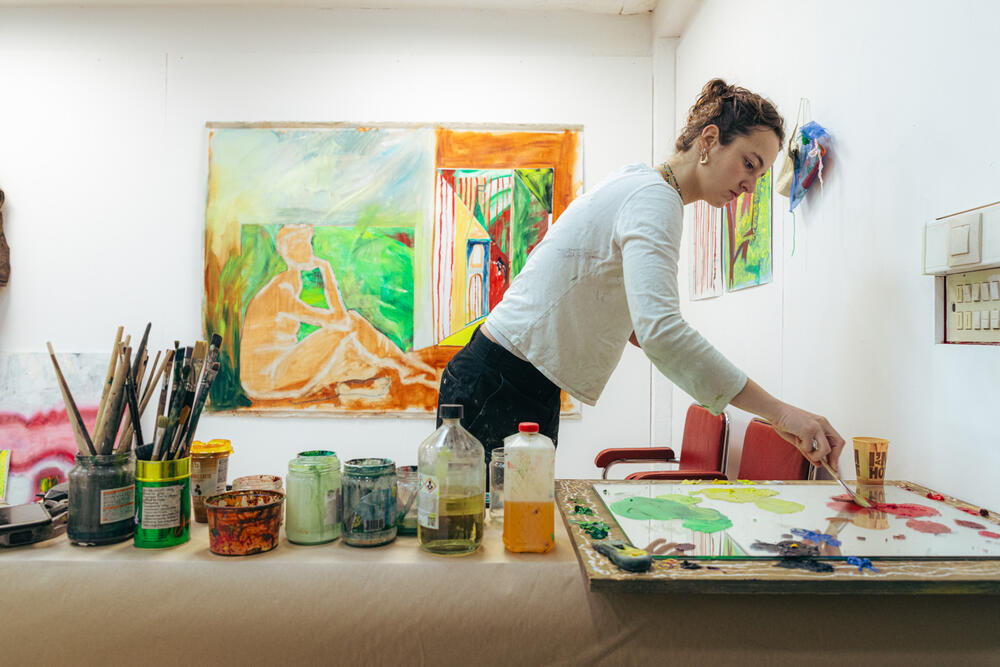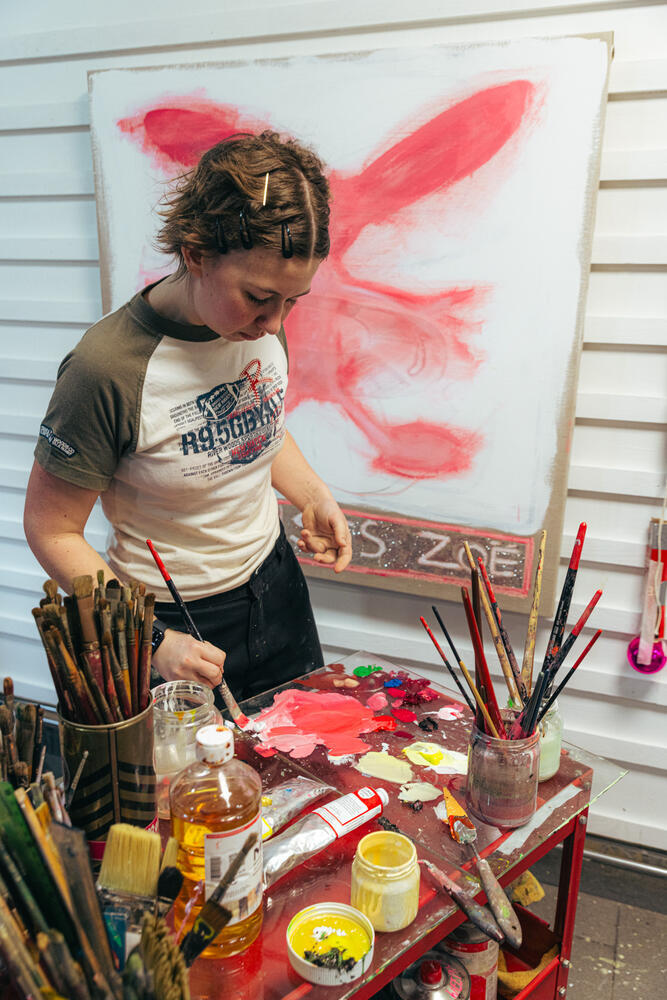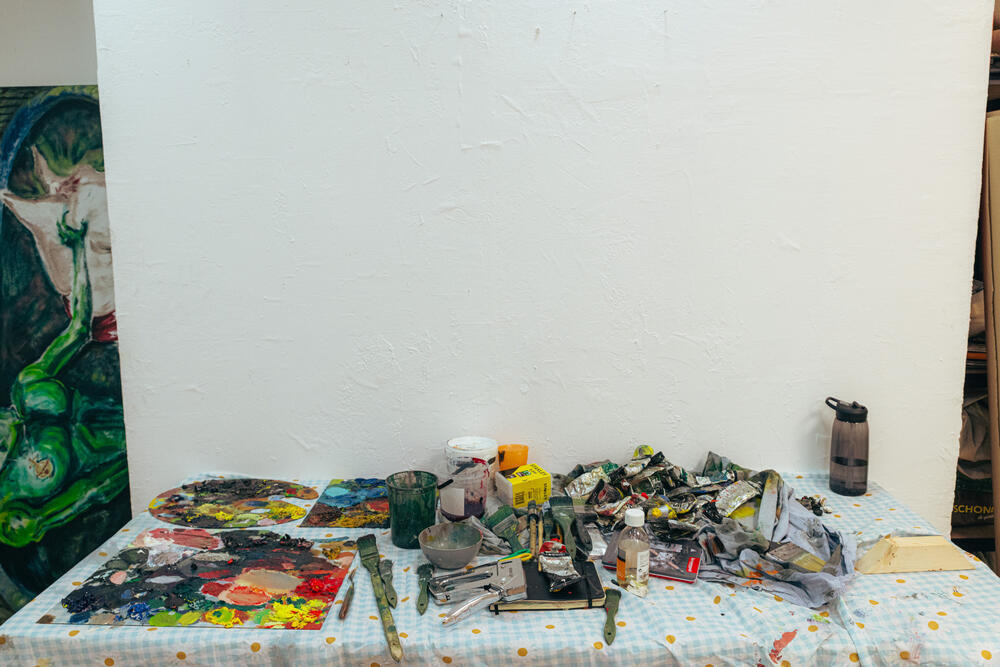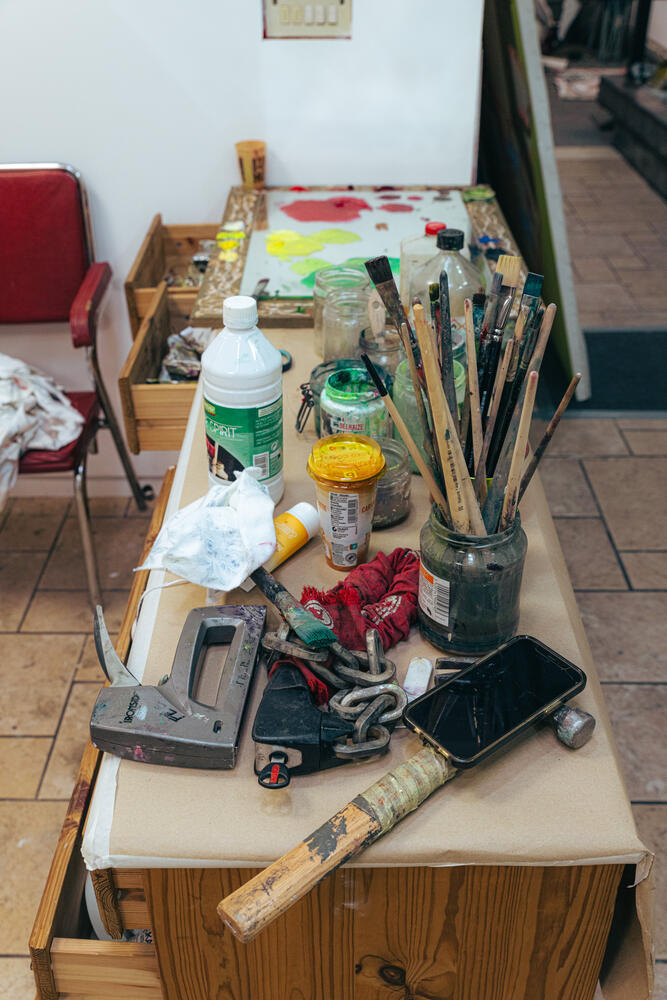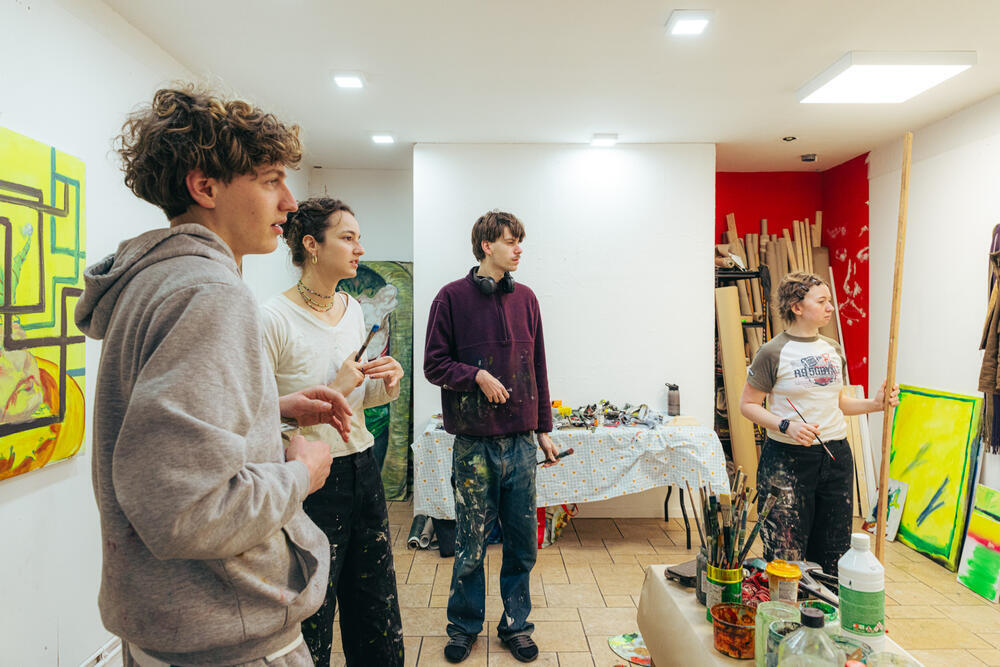A look inside Bijlokevest 93
"How significant is your studio for you?" With this question, we approached participants of Atelier in Beeld for our magazine Kunstletters.
At Bijlokevest 93, you'll find the workspace of Zoë, Alban, Fee, and Yann. They are all in their master year of Painting at KASK Ghent. Near the school, they found a workspace where they paint together and exchange thoughts about each other's work. The studio is located in Ghent.
Is your studio influential in the work that you create?
Yann Struyf: There are practical aspects where you can directly see the consequences. The influence of the size of your workspace on the size of your work is a perfect example. But in my opinion, there are also more subtle influences that creep into your work subconsciously. For example, color behaves differently depending on the context, but this isn't immediately noticeable. Often, it's others who notice the differences, or you only realize it when you take your work out of the environment of your workspace.
Alban De Wachter: Not necessarily, I could make the same work elsewhere, but of course, my studio does limit my work in a certain sense. My space in the studio has spatial constraints that I have to respect. Apart from space, there's also the very present group dynamics in the studio. This does have more influence on the type of work I create; you constantly see different work and methods.
Zoë Dejonghe: I don't think I'm so dependent on the type of studio I have. As long as I have a place to work, my process as a painter will evolve. I think different places can have an interesting effect on the works you create as an artist. A large studio allows for large works. A small studio adapts to that, and you create smaller works. I don't necessarily see other circumstances as a limitation, but rather as a new way of looking.
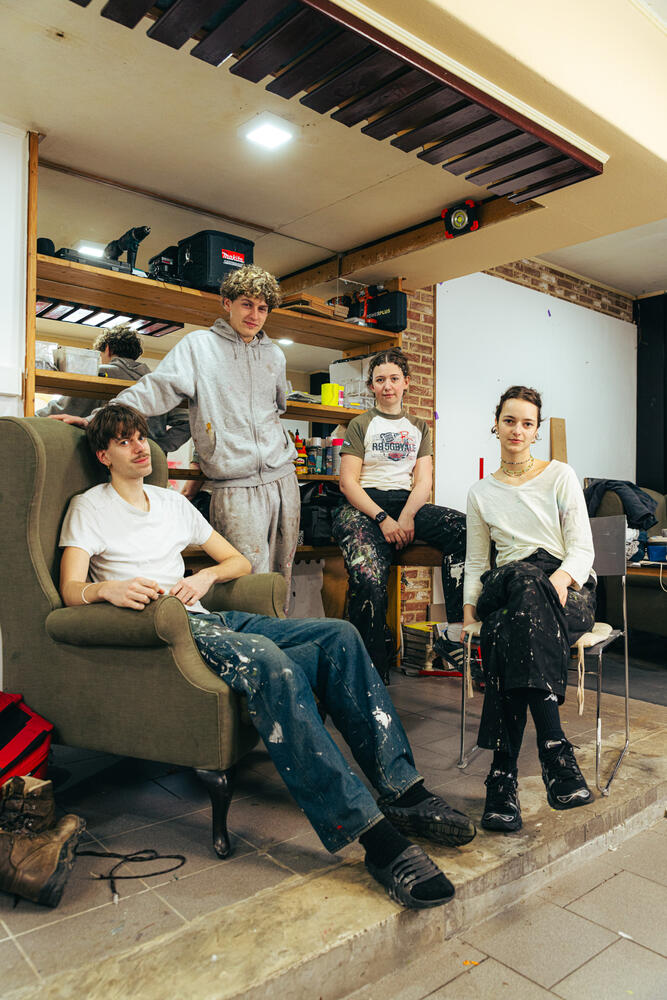
The friendship that has developed from sharing a studio is very important. As an artist, you can encounter many uncertainties, but through the close bond and dialogue with everyone, you receive affirmation and courage to continue working.
Do you have a fixed method in your studio?
Fee Maertens: Usually, the first hour is quite unproductive. Despite seeing each other day in and day out, there always seems to be a lot to catch up on each day. After chatting, I put on my painting clothes and sit in front of my work on a chair. Then I try to assess the situation first: What happened yesterday? And how are we going to try to solve this today? I pick up paint and brush and attack like a knight.
Alban De Wachter: I question everything from the previous day and sometimes destroy work. Then I go through my image archive and often find nothing inspiring, to my disappointment. But then I start anyway, and suddenly I notice that the images emerge and do their thing - or sometimes they don't.
In what way do the other artists in the studio influence your work (method)?
Fee Maertens: We have been at school together for 3.5 years now and have shared a studio with the four of us for half a year. We know each other and each other's work very well by now. Occasionally, elements from one person's work find their way into another's. Often, we don't notice this ourselves, and it passes unnoticed until an outsider points it out to us. We also regularly take time to discuss each other's work and often ask for each other's feedback. So, we are definitely influenced by each other directly and indirectly. Nevertheless, all four of us have our own distinct style and way of working.
Alban De Wachter: I think what benefits me most is the friendship that has developed from sharing the studio. As an artist, you can feel uncertain, but through the close bond and dialogue among everyone, you receive a lot of affirmation and courage to keep working.
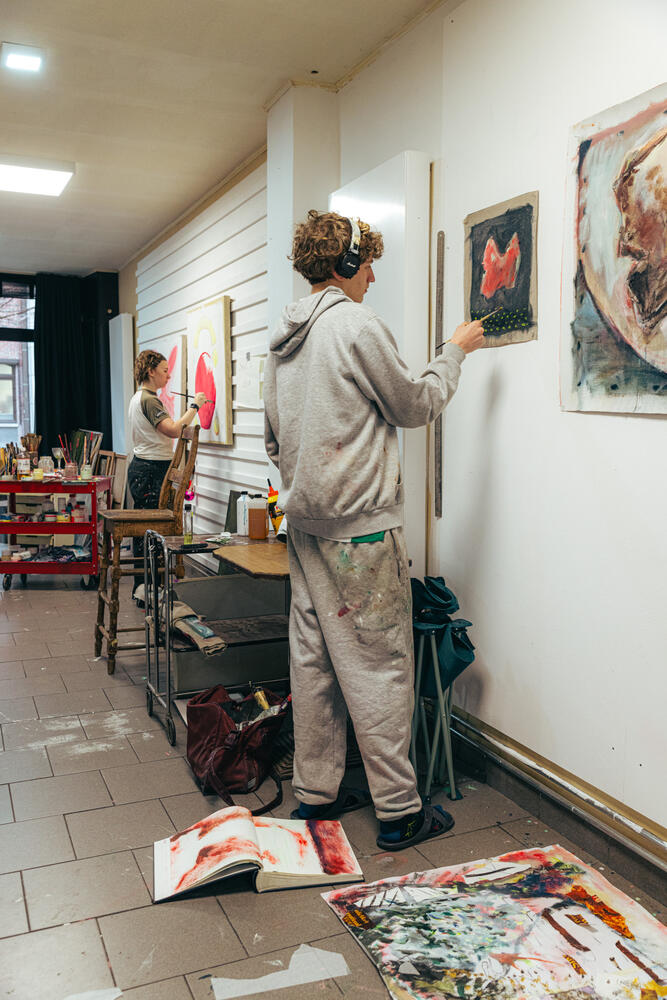
Curious to hear more stories from artists? With a subscription to Kunstletters, you'll receive a fresh dose of inspiration in your mailbox four times a year.
